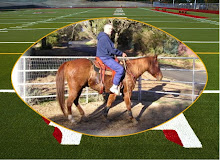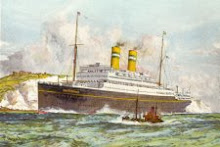Ukraine remembers famine horror
By Laura Sheeter BBC News, Kiev
Ekaterina Marchenko is insistent.
"I can't have you leaving here hungry," she says. "Here, just have this bowl of soup, and maybe later you'll feel like having a sandwich, or a cup of tea and a piece of cake."
The hospitable 87-year-old cannot bear the thought of her guest being less than full, but then she has a horror of going hungry.
Seventy-five years ago, Ekaterina saw seven members of her family and almost all of her neighbours starve to death, in a man-made famine that killed millions of people in Ukraine.
Tree bark and roots
The "Holodomor" or "famine plague" as it is known in Ukraine, was part of Joseph Stalin's programme to crush the resistance of the peasantry to the collectivisation of farming.
"I can't have you leaving here hungry," she says. "Here, just have this bowl of soup, and maybe later you'll feel like having a sandwich, or a cup of tea and a piece of cake."
The hospitable 87-year-old cannot bear the thought of her guest being less than full, but then she has a horror of going hungry.
Seventy-five years ago, Ekaterina saw seven members of her family and almost all of her neighbours starve to death, in a man-made famine that killed millions of people in Ukraine.
Tree bark and roots
The "Holodomor" or "famine plague" as it is known in Ukraine, was part of Joseph Stalin's programme to crush the resistance of the peasantry to the collectivisation of farming.
“ Don't go near the priest's house either - because the neighbours there have killed and eaten their children ”
Ekaterina Marchenko recalls a warning from her mother
Ekaterina Marchenko recalls a warning from her mother
When in 1932 the grain harvest did not meet the Kremlin's targets, activists were sent to the villages where they confiscated not just grain and bread, but all the food they could find.
The confiscations continued into 1933, and the results were devastating. No-one is sure how many people died, but historians say that in under a year at least three million and possibly up to 10 million starved to death.
The horrors Ekaterina saw live with her still.
"We didn't have any funerals - whole families died," she tells me.
"Of our neighbours I remember all the Solveiki family died, all of the Kapshuks, all the Rahachenkos too - and the Yeremo family - three of them, still alive, were thrown into the mass grave."
Ekaterina, her mother and brother, survived by eating tree bark, roots and whatever they could find - but she says starvation drove others to terrible deeds.
"One day mother said to us, 'children, you can't take your usual shortcut through the village anymore because the grandpa in the house nearby killed his grandson and ate him - and now he's been killed by his son...
And don't go near the priest's house either - because the neighbours there have killed and eaten their children.'"
The confiscations continued into 1933, and the results were devastating. No-one is sure how many people died, but historians say that in under a year at least three million and possibly up to 10 million starved to death.
The horrors Ekaterina saw live with her still.
"We didn't have any funerals - whole families died," she tells me.
"Of our neighbours I remember all the Solveiki family died, all of the Kapshuks, all the Rahachenkos too - and the Yeremo family - three of them, still alive, were thrown into the mass grave."
Ekaterina, her mother and brother, survived by eating tree bark, roots and whatever they could find - but she says starvation drove others to terrible deeds.
"One day mother said to us, 'children, you can't take your usual shortcut through the village anymore because the grandpa in the house nearby killed his grandson and ate him - and now he's been killed by his son...
And don't go near the priest's house either - because the neighbours there have killed and eaten their children.'"
Though some, like Ekaterina, can never forget what happened, many Ukrainians had never heard of the famine until the country's independence - such was the secrecy about it during Soviet times.
But every year since independence, events to commemorate the famine get larger, and momentum is growing behind a campaign to raise international awareness of what happened.
This weekend marks the 75th anniversary of the start of the Holodomor, and Ukraine is starting a year of commemorations.
Events are being held across the country. And around the world members of the Ukrainian diaspora are also marking the anniversary.
Ukraine has officially declared the Holodomor a genocide - it says the famine was part of a campaign to crush Ukrainian nationalism.
Russian objections
Ukraine's borders were sealed during the famine, say scholars, to ensure the subjugation of the whole country.
It is a message Ukrainian President Viktor Yushchenko wants to take to the world.
But every year since independence, events to commemorate the famine get larger, and momentum is growing behind a campaign to raise international awareness of what happened.
This weekend marks the 75th anniversary of the start of the Holodomor, and Ukraine is starting a year of commemorations.
Events are being held across the country. And around the world members of the Ukrainian diaspora are also marking the anniversary.
Ukraine has officially declared the Holodomor a genocide - it says the famine was part of a campaign to crush Ukrainian nationalism.
Russian objections
Ukraine's borders were sealed during the famine, say scholars, to ensure the subjugation of the whole country.
It is a message Ukrainian President Viktor Yushchenko wants to take to the world.
This anniversary is being used to boost a campaign for other countries, and the United Nations, to officially declare the Holodomor a genocide, too.
But Russia objects. The Russians are accusing Ukraine of using the tragedy of the past to gain political advantage.
The famine could not be genocide, they say, because there was starvation in many parts of the Soviet Union at the time and, they add, for the Ukrainians to claim it was aimed at them is an insult to those of other nationalities who died.
Within Ukraine there is division too.
The head of the country's Communist Party, Pyotr Simonenko, does not believe there was any deliberate starvation at all, and he accuses President Yushchenko of using the famine to stir up hatred.
"He draws people's attention to history so as not to answer questions about the problems of today - he speaks of the dead, not thinking of the living," he says.
"Yushchenko has set a time bomb under Ukrainian-Russian relations.
"His insistence that this be recognised as a genocide - which is by the way, an idea with no foundation - will only lead to someone using it in the future to ignite inter-ethnic conflict."
Though few in Ukraine share Mr Simonenko's interpretation of history, there is some sympathy with his view that the commemoration has been politicised, and that the campaign could damage relations with Russia.
None of this, however, is deterring President Yushchenko. He says he wants a new law criminalising Holodomor denial - and to see new monuments to the famine built in Ukraine before the end of the year's commemorations.
It remains to be seen whether those monuments will bring Ukrainians together in remembrance, or divide them along political lines.
Story from BBC NEWS:But Russia objects. The Russians are accusing Ukraine of using the tragedy of the past to gain political advantage.
The famine could not be genocide, they say, because there was starvation in many parts of the Soviet Union at the time and, they add, for the Ukrainians to claim it was aimed at them is an insult to those of other nationalities who died.
Within Ukraine there is division too.
The head of the country's Communist Party, Pyotr Simonenko, does not believe there was any deliberate starvation at all, and he accuses President Yushchenko of using the famine to stir up hatred.
"He draws people's attention to history so as not to answer questions about the problems of today - he speaks of the dead, not thinking of the living," he says.
"Yushchenko has set a time bomb under Ukrainian-Russian relations.
"His insistence that this be recognised as a genocide - which is by the way, an idea with no foundation - will only lead to someone using it in the future to ignite inter-ethnic conflict."
Though few in Ukraine share Mr Simonenko's interpretation of history, there is some sympathy with his view that the commemoration has been politicised, and that the campaign could damage relations with Russia.
None of this, however, is deterring President Yushchenko. He says he wants a new law criminalising Holodomor denial - and to see new monuments to the famine built in Ukraine before the end of the year's commemorations.
It remains to be seen whether those monuments will bring Ukrainians together in remembrance, or divide them along political lines.
http://news.bbc.co.uk/go/pr/fr/-/2/hi/europe/7111296.stm


























